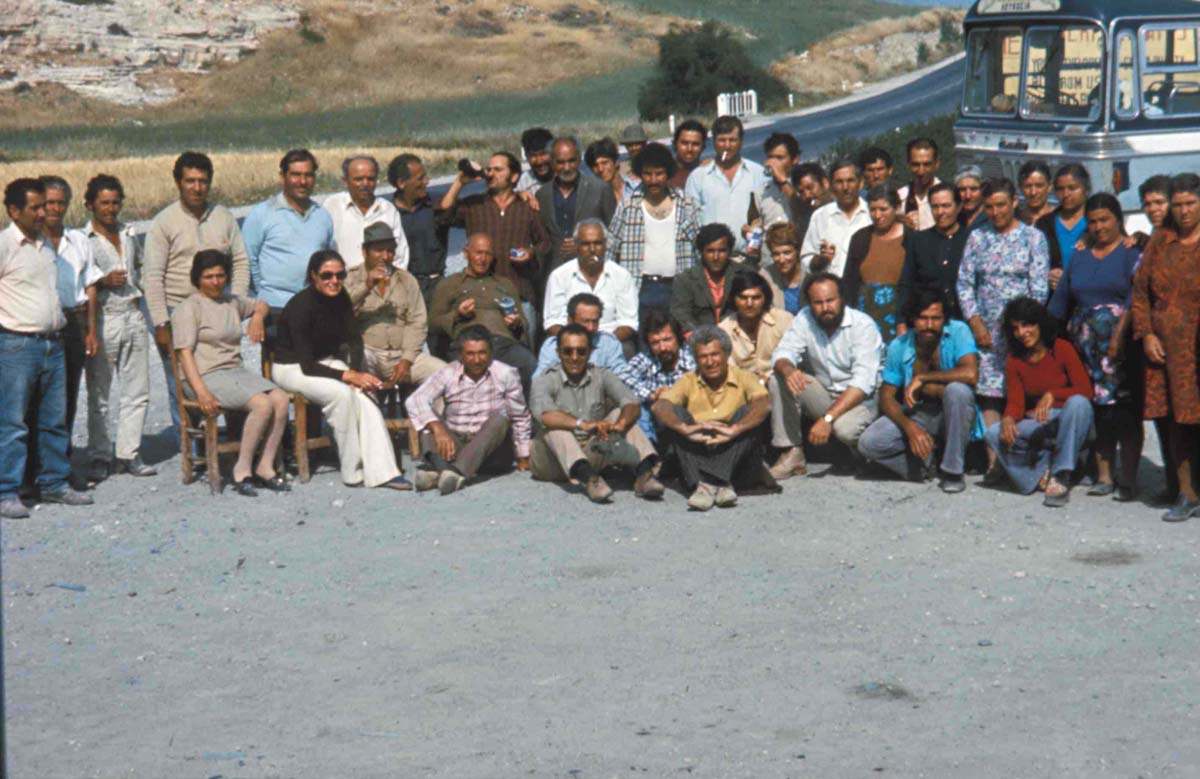
Team for the first excavation season, 1975 (P. Aupert / Archives EFA, Y.37P)
The following year saw the opening of new perspectives with the clearing of an element of an Archaic wall, the dating of the door of the middle wall to the 6th-7th century AD, and the discovery of a deposit containing huge ceramic jars in the vast building uphill, which we suspected from that moment on had economic importance, along with discovering at its summit the base of a second monumental limestone vase which obviously indicated the proximity of the temple of Aphrodite. At the same time, ancillary investigations revealed the presence of the cult of Theos Hypsistos and, in the necropolis, evidence of an interment from the 10th century BC.
This was also the year of launching related explorations: magnetic detection, evaluating epigraphic resources from the town of Agios Tychonas, amassing testimonia.
![Aerial view of the exploratory trenches, 1975: A-B, middle fortification wall; C, palace (Archives EFA, AMATH 3-1 [1])](http://www.efa.gr/storage/2016/04/amathonte_AMATH_3-1_1.jpg)
Aerial view of the exploratory trenches, 1975: A-B, middle fortification wall; C, palace (Archives EFA, AMATH 3-1 [1])
Everything was there, in embryonic form, that would lead to the conclusive identification of the temple of Aphrodite in 1977 (thanks to, among other evidence, a limestone torso of the goddess) and its early constructions, the discovery of the nearby vicinity with an early Christian basilica along with the presence of, if not an authentic settlement, at least pottery dating from the 11th century BC, the oldest found at the site and in the necropoleis. Geographers then drew the geomorphological map of the three hills, after which the gathering of inscriptions began and the ceramographers and geophysicists went to work. The latter’s research, along with several surveys, was behind the identification and location of the city’s inner harbour. Lastly, the rescue excavation of a remarkable grave in the north necropolis, which must have held a sarcophagus similar to the one housed in the Metropolitan Museum, led to the unexpected discovery of some fifteen vases imported from Greece as early as the 8th century BC. The group sheds an interesting light on the city’s relation, from its first beginnings, to the Greek continent, particularly Euboea.
P. Aupert, trans. A.M. Schroth-Daskalakis
